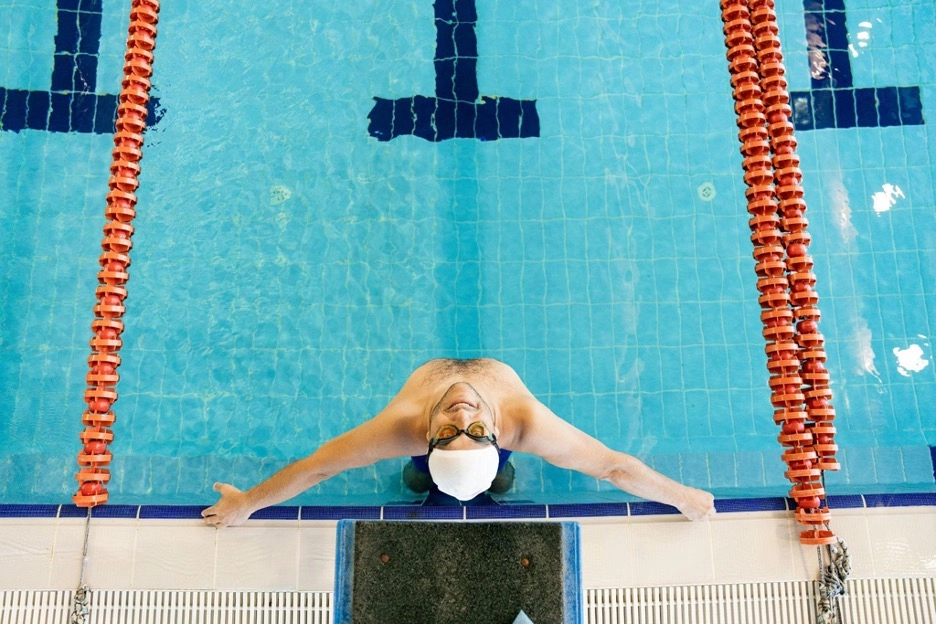





We all know how fun and refreshing swimming can be. As a matter of fact, it is also an aerobic exercise that can help you stay fit. Swimming is a rhythmic activity that raises your heart rate and oxygen intake, making it a good cardiovascular workout. But did you know it’s also an excellent way to build your muscles? The water resistance during a swim creates a natural form of strength training, engaging multiple muscle groups simultaneously.

At Aqua Artist Swimming School, we believe swimming is one of the most effective full-body workouts out there. Whether you’re an athlete looking to improve muscle strength or a beginner seeking a low-impact way to tone up, adding swimming into your fitness routine can earn fantastic results.
In this blog, we’ll explore how different swimming strokes target specific muscles, how you can integrate swimming into a muscle-building routine, and the key strategies for maximising muscle growth in the pool. Let’s dive in:
When you think of building muscles, the first thing that pops up in your head may be weightlifting, where the resistance comes from weights or machines. In swimming, it's all about water resistance to engage muscles. In fact, water is 800 times denser than air, meaning every movement you make in the pool forces your muscles to work harder than they would on land. This constant resistance promotes muscle endurance and strength.
Swimming also involves repetitive movements that improve muscle memory, coordination, and flexibility while reducing the risk of injury. The buoyancy of water allows for low-impact resistance training. So, if you are someone recovering from injuries or looking to protect your joints, learning to swim will be a suitable option.
While swimming doesn’t build bulky muscle mass like weightlifting, it does improve lean muscle development and endurance. While lifting weights targets isolating specific muscles, swimming engages multiple muscle groups at once. This makes it a functional workout, improving overall strength, posture, and mobility.
If you are looking to increase muscle size, swimming alone may not be enough. However, when combined with strength training, it can provide a balanced approach to fitness. You can pair it with land-based strength training to maximise muscle growth. Here’s a workout example you can try:
Strength Training + Swimming Combo
Upper Body Focus Days: Weight training (pull-ups, rows, presses) + freestyle or butterfly swimming sessions
Lower Body Focus Days: Squats, lunges, deadlifts + breaststroke for leg activation
Core Training: Planks, Russian twists + backstroke to strengthen the core
Different strokes activate different muscle groups, and understanding this can help you customise your swimming workouts for specific goals.
Muscles Targeted:
Upper body: Deltoids, triceps, pectorals, latissimus dorsi (lats)
Core: Abdominals, obliques
Lower body: Quadriceps, hamstrings, calves
Benefits:
Freestyle is the fastest and most efficient stroke, providing full-body conditioning while improving speed and endurance. The repetitive arm movements build shoulder, triceps, and back strength, while the flutter kick works the quadriceps and hamstrings.
Pro Tip:
To maximise muscle engagement, focus on proper stroke technique, keeping your elbows high during the pull phase to improve activating your back and shoulder.
Muscles Targeted:
Upper body: Latissimus dorsi, rhomboids, trapezius
Core: Lower back, obliques
Lower body: Glutes, hamstrings
Benefits:
Backstroke helps strengthen the posterior chain, improving posture and reducing lower back pain. The alternating arm movements provide an excellent workout for the lats and shoulders, while the flutter kick tones the glutes and hamstrings.
Pro Tip:
Try maintaining a flat body position in the water to avoid excessive strain on your lower back and ensure maximum muscle engagement.
Muscles Targeted:
Upper body: Pectorals, biceps, deltoids
Core: Abdominals, lower back
Lower body: Quadriceps, glutes, adductors (inner thighs)
Benefits:
Breaststroke is a leg-dominant stroke, making it highly effective for lower body strength and toning. The frog-like kick targets the inner thighs and glutes, while the sweeping arm motion strengthens the chest and shoulders.
Pro Tip:
Focus on a powerful kick and fluid arm movement instead of rushing through the stroke. This will improve both efficiency and muscle activation.
Muscles Targeted:
Upper body: Deltoids, trapezius, pectorals, latissimus dorsi
Core: Abdominals, obliques
Lower body: Glutes, hamstrings
Benefits:
The butterfly stroke is the most demanding but also the most effective for building upper body strength. The simultaneous arm movement and dolphin-like undulating body motion engage nearly every muscle, providing an intense, full-body workout.
Pro Tip:
If you’re a beginner, start your swimming lesson with short distances and gradually increase as your endurance improves. The butterfly is an advanced stroke, but even small sets can provide significant muscle engagement. So, keep doing it!
Muscle growth isn’t just about training. It also requires proper nutrition and recovery. Here are some important guidelines our swimming trainers at Aqua Artist share with students:
Swimming breaks down muscle fibres, which need to be repaired for growth. A high-protein diet with lean meats, eggs, dairy, and plant-based protein sources supports muscle recovery.
Although you don’t feel as sweaty in the pool, staying hydrated is essential. Drink plenty of water before and after swimming to maintain performance and muscle function.
Stretching: Helps improve flexibility and prevent muscle tightness.
Foam Rolling: Reduces soreness and improves muscle recovery.
Rest Days: Allow muscles time to rebuild and strengthen.
Even experienced swimmers can fall into habits that limit muscle growth and hurt overall performance. By addressing these common mistakes, you can improve your strength and prevent setbacks.
Using the wrong stroke form not only reduces the efficiency of your workout but can also lead to injuries, especially if you’re repeatedly placing strain on the wrong muscle groups.
To avoid this, enrol yourself in a renowned adult swimming class. Expert instructors will guide you to focus on proper stroke mechanics while you learn to swim. From refining your freestyle to perfecting your butterfly, they will help you develop the solid foundation needed to build strength effectively and that’s what we do at our Auckland swimming school too.
Swimming is an excellent cardiovascular and endurance activity, but it doesn’t always maximise muscle growth on its own. Over time, relying solely on pool workouts may lead to plateaus in muscle development.
To overcome this, complement your swim sessions with land-based strength training. Simple resistance exercises like squats, deadlifts, and pull-ups target muscle groups that swimming alone may not fully engage. Aqua Artist’s trainers can guide you in this regard, creating a balanced routine that combines swimming techniques with off-pool strength work for well-rounded muscular development.
Pushing yourself too hard without enough rest can also cause overuse injuries, fatigue, and a decline in performance. It’s a common mistake among swimmers focused on competitive swimming, as they often equate more practice time with faster improvement.
So, remember that recovery is as important as training. Include scheduled rest days, make sure you’re eating a well-balanced diet, and stay hydrated. A thoughtful approach to recovery like this will help you sustain progress, prevent burnout, and ultimately support better muscle growth.
Swimming is not just for cardio, it’s a powerful tool for muscle growth, endurance, and total-body conditioning. By including different strokes, proper technique, and a balanced training routine, you can achieve a strong, sculpted physique in the pool.
If you are new to swimming, join us at Aqua Artist Swimming School and take your strength training to the next level. Our expert instructors will guide you through personalised techniques to maximise muscle engagement and overall fitness. Contact us to book your first session today!